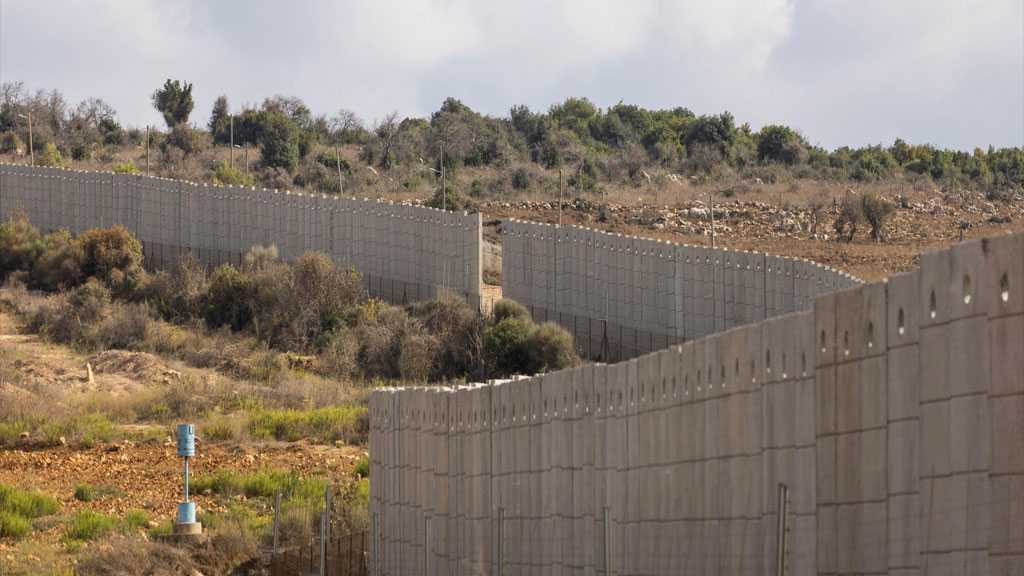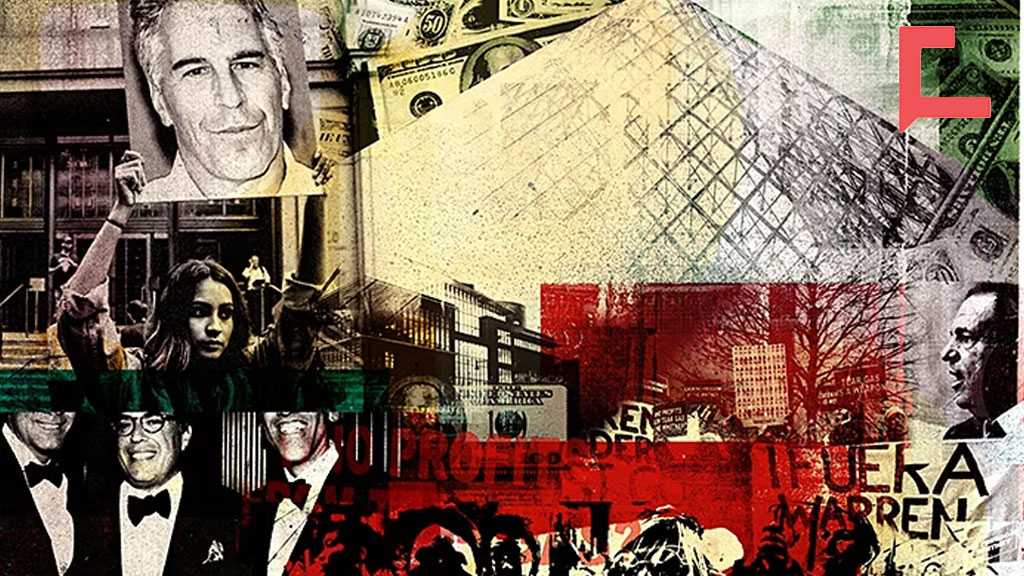Maps of Occupation: Can Anyone Deny “Israel’s” Expansion Plot in Lebanon?

By Ihab Shawqi
The map published by the Zionist settlement movement “Uri Tzafon”, which displayed lands and properties in South Lebanon and called on investors to head north on the basis that these are Zionist lands destined for occupation, investment, and settlement, stands as clear confirmation of the Resistance’s warnings, its precise reading of the conflict, and the soundness of its strategic vision.
This announcement cannot be dismissed or reduced to mere psychological warfare. It mirrors similar initiatives in Gaza by comparable settlement groups. Considering the evidence and the enemy’s policies in Gaza—its evasiveness, insistence on destruction, and forced displacement—these developments are clearly planned and moving toward implementation. It is a major alarm bell for Lebanon.
This challenge requires confrontation through a plan to restore sovereignty over Lebanese territory, a defense strategy commensurate with the scale of the threat, and a deterrent Resistance presence against an enemy that has effectively expanded across the entire region.
This issue can be addressed through the following points:
First: Examples of Resistance Warnings
The Resistance in Lebanon has long warned of the enemy’s ambitions toward Lebanon’s resources, emphasizing that without the Resistance, Lebanon would be prey to expansion and usurpation—just like occupied Palestine.
The Master of Martyrs of the Nation, Sayyed Hassan Nasrallah, highlighted this on multiple occasions, including on May 9, 2022, when he said: “The suffering of the people of the South began with the Zionist entity’s occupation of Palestine. And to those who claim that ‘Israeli’ attacks are responses to Resistance operations, we say: Until the 1960s, there were no such operations. And around these same days in 1948, the enemy entered the southern villages, violated the land, and terrorized the residents.”
His Eminence also recalled that Imam Sayyed Abdul Hussein Sharafeddine sent his well-known letter to the President of the Republic urging protection for southerners so they would not be displaced and so the South would not become another Palestine.
Hezbollah Secretary General His Eminence Sheikh Naim Qassem reaffirmed these warnings, stressing that Lebanon is the final homeland for all its people and that “Israel” harbors expansionist ambitions in Lebanon.
Regarding American mediation, Sheikh Qassem said the US is fully complicit with “Israel”, seeking to dominate Lebanon and grant “Israel” whatever it desires. He warned that the Americans aim to disarm the Resistance—peacefully or militarily—in order to weaken Lebanon and render it an easy prey under the guise of the so-called “Greater ‘Israel’” project.
Second: Evidence and Warnings in Gaza
Palestine has witnessed renewed efforts to reinstate settlement projects in the Gaza Strip. Reports indicate that around six engineering plans have already been completed for the construction of six settlement outposts in northern Gaza. Meanwhile, the “Jewish Power” party has proposed a bill to overturn the 2005 “disengagement plan” and rebuild the settlements evacuated from “Gush Katif” in southern Gaza.
Monitoring the military movements of the “Israeli” enemy reveals coordination between the resettlement plans in Gaza and the “Generals’ Plan” prepared by former General Giora Eiland and submitted to Zionist Prime Minister Benjamin Netanyahu. The occupation forces have begun implementing this plan through massacres aimed at forcibly displacing residents of northern Gaza.
Military and settlement details also coincide: a military road was carved out along the “Netzarim” corridor under security and military pretexts—the same road settlers hope to rely on as a vital artery for future settlement activity.
Third: Ambitions in South Lebanon
The publication of settlement maps for South Lebanon by the Zionist movement “Uri Tzafon” has renewed scrutiny of the entity’s historic ambitions in the South, which revolve around water resources essential to Zionist security doctrine, economic interests, and alleged biblical claims.
This is not the first such announcement. In September 2024, similar advertisements appeared under “The Settlement Movement in South Lebanon,” created by a group called “‘Israel’ Sokol,” promoting the purchase of homes and land in Southern Lebanon.
According to the movement’s announcement, the detailed map of Lebanese lands offered for sale stretches from the mouth of the Litani River at Qasmiyeh on the Mediterranean coast northward to Kfarkela, passing through areas in West Beqaa, Hasbaya, and the Shebaa Farms. The area includes at least four main cities—Tyre, Bint Jbeil, Marjeyoun, and Hasbaya—along with the villages of those districts.
These areas were assigned Hebrew names, and plot prices were set at around 300,000 shekels [approximately $80,000 per plot].
When opponents of the Resistance attempt to downplay these actions as unofficial initiatives by extremist groups rather than expressions of the entity’s strategic direction, two responses arise—one political, the other historical and strategic.
Politically, the entity’s actions—insistence on holding the Shebaa Farms, expansion into Syria and the occupation of Jabal Al-Sheikh [Mount "Hermon"], refusal to withdraw from positions it seized in the South despite ceasefire agreements, and its persistent efforts to disarm the Resistance and incite internal strife over this issue—all point clearly to Zionist expansionist ambitions should Lebanon ever be left without Resistance. This becomes especially clear when linked to developments in the West Bank, Syria, and the repeated revival of the so-called “Greater ‘Israel’” project.
Historically and strategically, dozens of books and documents detail explicit admissions and intentions to occupy the South for reasons related to water security and religious claims.
Some notable examples include:
• In 1903, Herzl wrote to Ottoman Sultan Abdul Hamid offering one million Turkish liras to allow Jewish settlement in the Galilee—near South Lebanon’s waters—since the Litani River was considered vital to Zionist plans.
• In a memo submitted to the 1919 Versailles Peace Conference, the Zionist movement explicitly expressed its desire to seize South Lebanon and Jabal Al-Sheikh [Mount "Hermon"], calling "Hermon" the true “father of waters” for Palestine.
• Zionist leaders attempted to persuade certain Lebanese religious figures to relinquish South Lebanon, which had a Muslim majority, in exchange for promises of financial and technical support to the nascent Lebanese state. The proposal was rejected.
• On September 24, 2024, “Israeli” spokesperson David Mencer declared that “the Litani River is ‘Israel’s’ northern border.”
• Chief Hasidic Rabbi Yitzhak Ginsburgh publicly called for “the settlement of Lebanon as part of the land promised to ‘Israel’ up to the Euphrates River.”
Historical sources also note that after the French-drawn declaration of the “State of Greater Lebanon” in September 1920, extending its borders from the Litani River in the north to Ras Al-Naqoura in the south, Zionist leaders saw these borders as a “disaster.” Prime Minister Chaim Weizmann tried to convince French General Henri Gouraud of the “importance of the Litani River’s waters for Palestine,” as Weizmann later recounted in his memoirs.
• Zionists also rely on the “Bible” to claim that the “Land of ‘Israel’” includes territories inhabited by the tribe of Naphtali on both banks of the Litani and by the tribe of Asher in the Sidon region, which historically had a small Jewish minority.
In conclusion, the “Israeli” enemy has clear ambitions in Lebanon, and its American patron seeks to integrate Lebanon into a broader US geostrategic framework encompassing maritime routes, trade pathways, and oil and gas fields. The only barrier to this expansion is the Resistance—and this explains the insistence on eliminating it, whether militarily or through political strife.
Here, the question is directed to the Resistance’s opponents:
Under the pretext of “sovereignty” and American approval—would they accept becoming “masters” over a Lebanon stripped of its South, just as Syria was stripped of the Golan and perhaps more?



